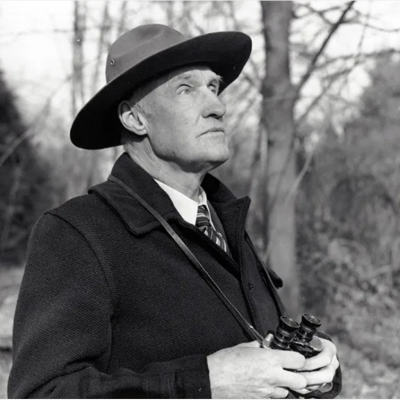Charles H. Rogers
For a glimpse of Charles H. Rogers’s work, including his original notes, visit Capturing Feathers, a Princeton University Library digital exhibit with items from the archives of Charles Rogers, the University’s Bird Collection, and the Stoddard Lab for Bird Coloration and Avian Sensory Ecology.
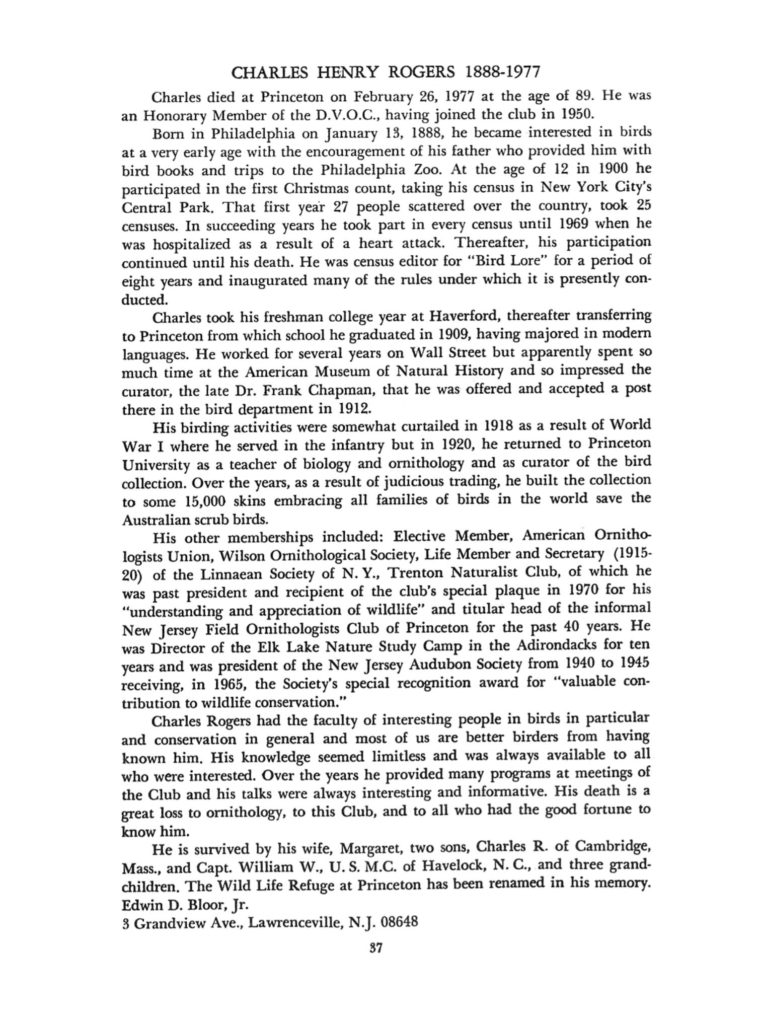
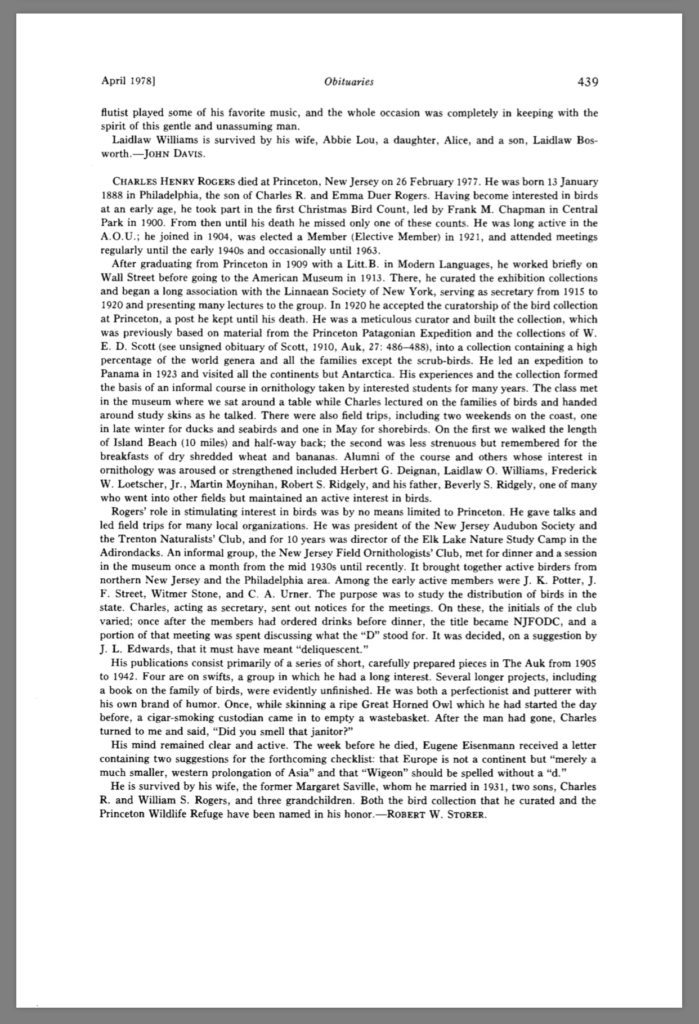
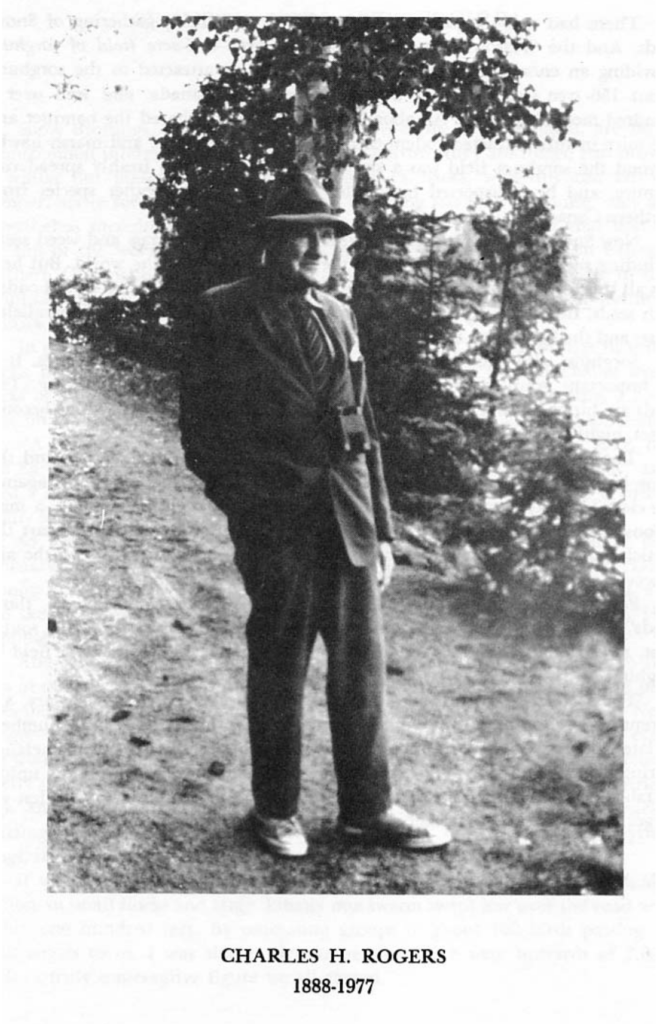
Charles Rogers and the Princeton Field Ornithologists
Tom Southerland met Charles Rogers shortly after moving to Princeton. Tom and Margot lived at 204 South Harrison St. On Dec. 15, 1962, Tom discovered an out-of-season Nashville Warbler in his ice-covered barberry hedge. He called Cynthia Fox, an experienced birder who lived nearby. She called Mr. Rogers, who arrived shortly and confirmed the identification; he was sufficiently impressed to invite Tom to come to meetings of the informal Field Ornithologists Club.
The bird club met in the Univsersity’s skin collection, in a high-ceilinged corner room on the highest floor of Guyot Hall, with north light for better examination of the specimens, and old metal cabinets whose drawers always got stuck. The club itself was informal but exclusive, by invitation only, and included local birders as well as respected bird men from the Urner Club, DVOC, Linnean Society, and Princeton’s Department of Biology. Rogers, at that time Curator of the Museum of Zoology, was in charge of the skin collection, an important resource in the days before accessible cameras, field guides, and internet. Admission to monthly meetings in the skin room gave these men access to detailed information that others did not enjoy, but also to friendships and mentorships that lasted for years and helped build careers and reputations. Some of the members Tom recalls included Ed Bloor, Ray Blicharz, Alan Brady, Jim Merritt, Dick Thorsell, Will Russell, Irv Black. Before the meetings, dinner and drinks at the Peacock Inn were enjoyed; once a year a special banquet included wives and a few female birdwatchers.
Tom and Margot Southerland went on to found Princeton Nature Tours, and they traveled the world studying birds. After Rogers’ death, Betty Horn (Mrs. Henry Horn) became curator of the skin collection, which was downsized; some skins were divested to museums such as the Field Collection in Chicago, and those remaining were moved to a climate-controlled basement room in Eno Hall. Also in Eno Hall were stored Rogers’s original field notebooks, which would be well worth a Senior Thesis or two if they are still there.
Tom recalls that Rogers enjoyed canoeing on the Stony Brook and Millstone River. He remembers once being taken along on Rogers’ Christmas Count route, a ten+ mile loop which Mr. Rogers walked from 1904 until the 1960s. Rogers himself organized and compiled the Princeton Christmas count until Ray Blicharz took it over in the 1960s.
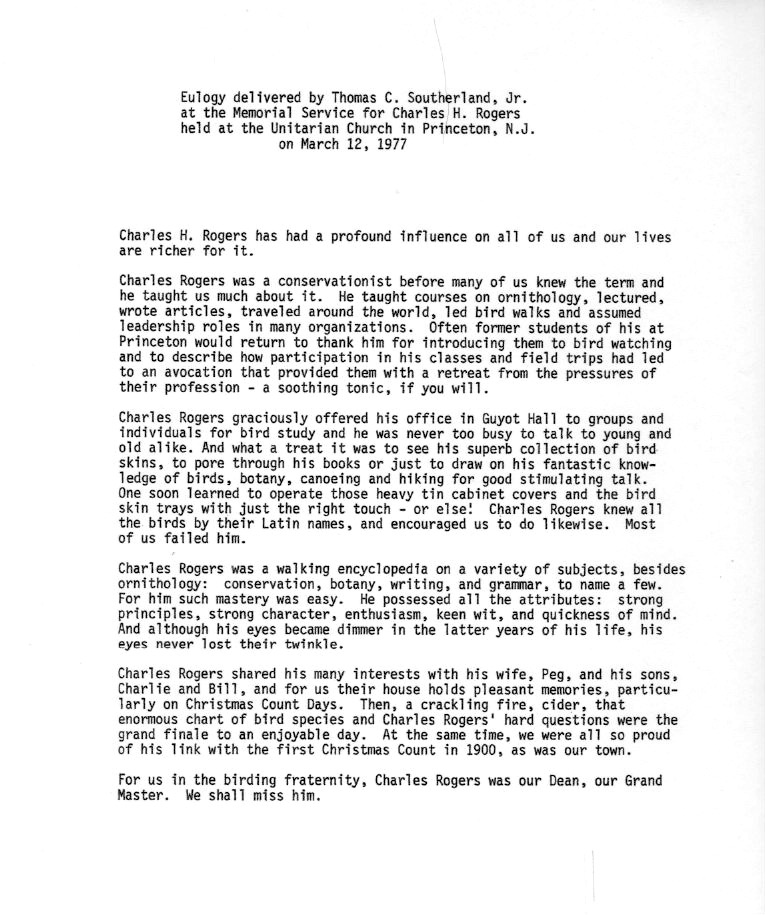
CHARLES H. ROGERS OBTAINS RARE SPECIMENS IN MEXICO
Princeton Herald, Volume 7, Number 42, 22 August 1930
Curator of Museum of Zoology Travels as Lone Passenger On Ship to Vera Cruz.
Several species of American birds not commonly known to breed as far south as Cordoba, Mexico, were found by Mr. Charles H. Rogers, Curator of the Princeton Museum of Zoology on a trip through Mexico from which he returned on August 5th. Mr. Rogers has not yet had time to complete a thorough research on his discovery but a preliminary study has revealed no information available on the breeding of the species on that part of the continent.
Mr. Rogers left Princeton on the 19th of June, making the trip from New Orleans to Vera Cruz on a 1,600 ton banana ship on which he was the only passenger. He spent several days in Vera Cruz collecting birds and insects and then went to Cordoba where he remained for nine days. Cordoba, Mr. Rogers stated has an altitude of 2,700 feet with an average temperature of 70 degrees.
Leaving Cordoba Mr. Rogers went to Mexico City by train, “one of the finest scenic rides in the world”, he declared. He remained in the Mexican capital for 16 days, adding to his collections and visiting the museums of the city.
“The National History Museum in Mexico City,” said Mr. Rogers, “is very fine. It is connected with the National University of Mexico which is also located in Mexico City. While I was there experiments were being made on a new kind of poison which is obtained from maguey.”
Mr. Rogers brought back to Princeton forty birds, some of which he obtained himself and other which he procured from curators in Mexico City. In addition to the birds, Mr. Rogers brought with him from Mexico a large collection of insects which will be placed in the Princeton University Museum.
While in Cordoba Mr. Rogers had the unusual experience of seeing a “regiment” of army ants perform an interesting feat. “It was on a rough cobble stone road,” he said, “and the ants which ranged from one half to three quarters of an inch in length were impeded in their march by the big gaps between the stones. Accordingly, the first to approach the aperture would construct a bridge with their bodies so that others in the rear could pass over easily. Some of the real soldiers among the army ants had jaws that resembled a pair of ice tongs.”
